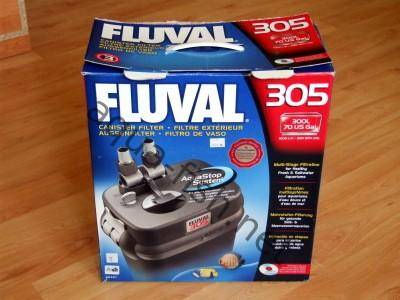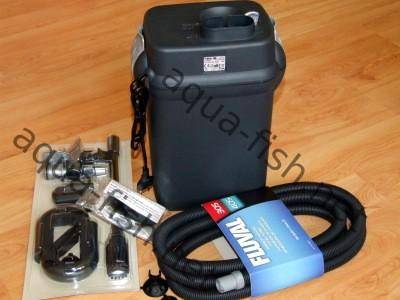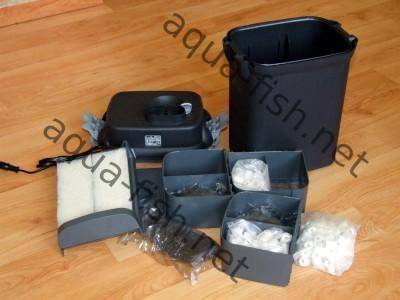What Accessories to Purchase for a Fish Tank
There are many potential fish keepers wandering around the pet stores looking at their future tanks, not realizing the purchase of the tank is only the first step towards setting up a good, healthy aquarium. There are many accessories to the tank that are required, not by choice but by need. The costing of the set up should include all of these before the initial purchase of the tank is undertaken. Nowadays it is possible to buy complete packages i.e. the tank plus everything you need to set it all up, but in most cases the extras are usually not of the standard that you would get if the equipment was purchased separately. This is not true in all cases and often novice keepers will purchase the packages with the intention of upgrading equipment further down the line as they get more experienced.TropicalFish.hu link exchange
Whether you're from Hungary or speak Hungarian, feel free to visit TropicalFish.hu - aquarium plants, tropical plants, tropical fish.
The golden rule before actually buying your tank is to think first, get an idea in your head of what fish etc. that you wish to keep. Researching these fish will tell you which size of tank will be best for your and your fishes needs. The size of the tank will determine which accessories you will need for the tank as they all range in power ratings dependant on water volumes. If you are new to the fish keeping hobby, purchase a tank that is supplied with a robust lid and lighting included, this will save a bit of extra money right from the start as separate lighting units can be quite expensive.
You are now the proud owner of a new tank, at this stage you will already have an idea in your head of which fish you are going to add. Basically there are three main setups that you have to choose from, coldwater, tropical, or saltwater. There are smaller variations that are a bit of a mix from the main three but for now these will be the easiest to explain.
If you have decided to go for a coldwater setup then there will be no need to heat the water to a temperature to suit the fish. Many fish keepers will start off with this set up to gain some experience before venturing onto the other two.
If you are keeping tropical or saltwater, a heater is a must. All fish species have preferred temperatures that they like to live in, always research your fish before you buy. The heaters that are used in fish tanks are very easy to use. They consist of a submersible glass tube that contains an element to heat the water; this is controlled by a thermostat which will normally be built into the heater. There is a dial on top of the heater that allows you to set the correct temperature, the heater is placed in the water and then plugged in, it may take a few hours for the water to warm up but that is quite normal. You will probably find that the temperature may not be exactly the same as the temperature that you have set, this is also quite normal, a small adjustment up or down will rectify this. There are more expensive heaters on the market that have separate thermostats and are made from titanium casings, but for most tanks a standard heater is sufficient. You are probably asking yourself now, how do I know what the water temperature is and what size heater should I be using?
The size of the heater required does depend on the water volume of the tank, at the pet stores the packaging for the heaters should display a table with all the information but a quick guide is tanks of 25 liters will only need a 50 watt heater, whereas a tank of 100 liters will need a heater of 200 watts. Exterior room temperature will have an effect on the temperature inside the tank as well.
To measure the water temperature a good reliable thermometer is required. The most common used nowadays is the strip thermometer that is stuck to the front of the tank on the outside. As the temperature increases boxes on the strip will change color so that you can read easily what the reading is. Before the strip thermometers become so popular, glass thermometers were placed inside the tank to give water temperature readings. I still use these as I find them far more accurate and they don’t take away from the viewing of the fish. Battery operated thermometers are also available for even more accuracy, a probe is placed in the tank and a digital readout is given on the front of the thermometer. These can be set to Fahrenheit of Centigrade and may also have a built in alarm if the temperature drops out of range.
With every good aquarium comes a good filtration system keeping the water parameters under control. Yet again, depending on the water volume, you will need to purchase a certain filter. In a smaller tank an internal filter will suffice, but with the larger tanks, you may have to opt for an external canister filter which will provide more capacity for extra media to control the toxins produced by your fish inhabitants. The filters will convert the ammonia and nitrites present in the water into nitrates, these are removed my water changes. It pays to have a good shop around to found the best filter for your tank, get advice from the pet stores or research on the internet. A good filtration system is required for all three of the main types of set up; always buy the best you can afford, it will save you money in the long run.
Test kits will be needed to make sure that your filters are working up to strength. A basic test kit will give you readings for ammonia, nitrite and nitrate levels. They are very simple to use, every kit comes with full instructions and if you find that you can’t get one straight away most of the pet stores will have the facilities to test the water for you. Keeping a close check on your water parameters will give you an early warning if things are going wrong.
Lighting is probably one of the most thought about pieces of equipment as there are many choices of tubes and even choices of types of lighting. For most fish keepers the lighting supplied with the tank is ample for their needs, things can change if a planted tank is desired and stronger lighting is required. Getting to know which tubes are more suited for specific needs is not too difficult, with a little bit of reading it does become perfectly clear. One of the newer lighting products to hit the market are the LED moonlighting strips. Once the main lights are out the tank then has a wonderful moonlight glow over it, I love this piece of kit and will always fit one to my tanks.
So now we have the tank, lid with lighting, heater, test kits, and filter. This is the basic hardware that you need but to keep your tank in tip top condition there are other items that will prove to be very useful to you. The tank will need to be kept clean, waste can build up in the substrate, algae will start to coat the tank glass, and then the tank will look shabby and start to appear neglected if left. Gravel cleaners are relatively inexpensive to buy and will keep your gravel clean if it is vacuumed on a weekly basis. The tank glass can be kept nice and clear by means of a magnetic glass cleaner, you can even purchase a long handled scraper that will remove any awkward algae. I have even been known to keep an old toothbrush for cleaning small, awkward areas, believe me it works!
General medications should be kept handy in cases of emergencies. A general fungicide and parasite treatment should be the basis of your medicine chest. Water conditioners should also be at hand for water changes, using this on a regular basis will ensure that any fresh water added to the tank will not harm your fish.
The items mentioned above are the basic equipment that you need for running your tank, there are other items designed to make you’re life easier if you wish to purchase them. Automatic fish feeders, water changers etc. items like these can be purchased once your tank is up and running, shopping around may surprise you.
Happy Fish Keeping!!!


